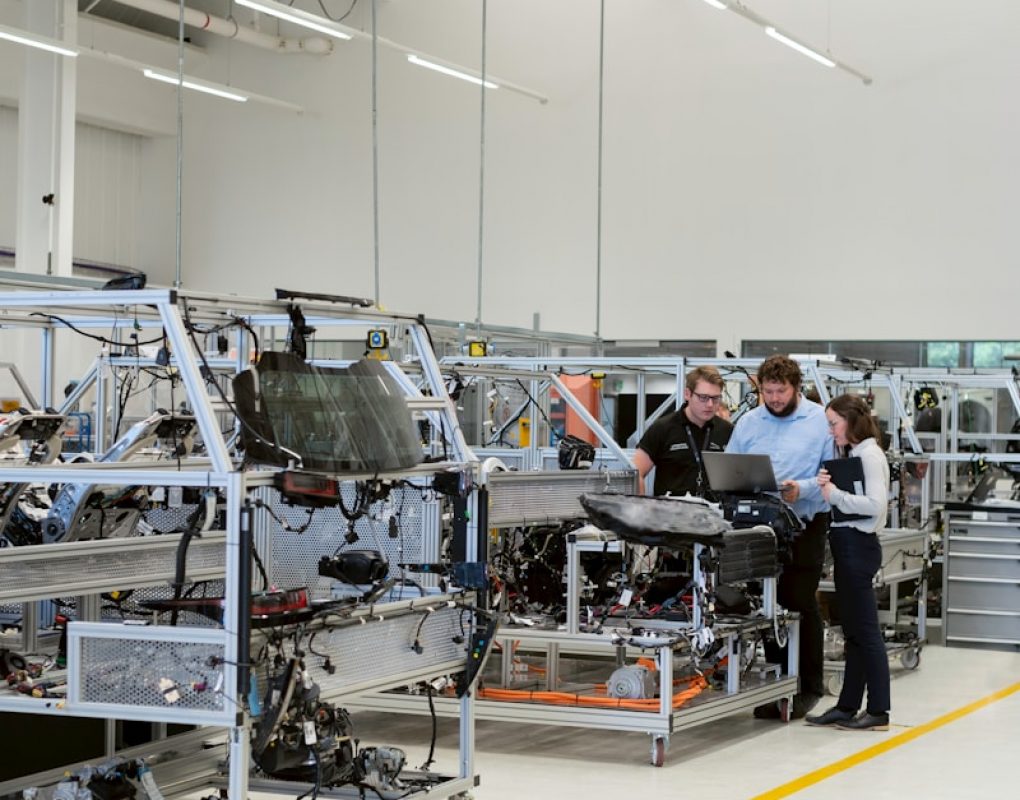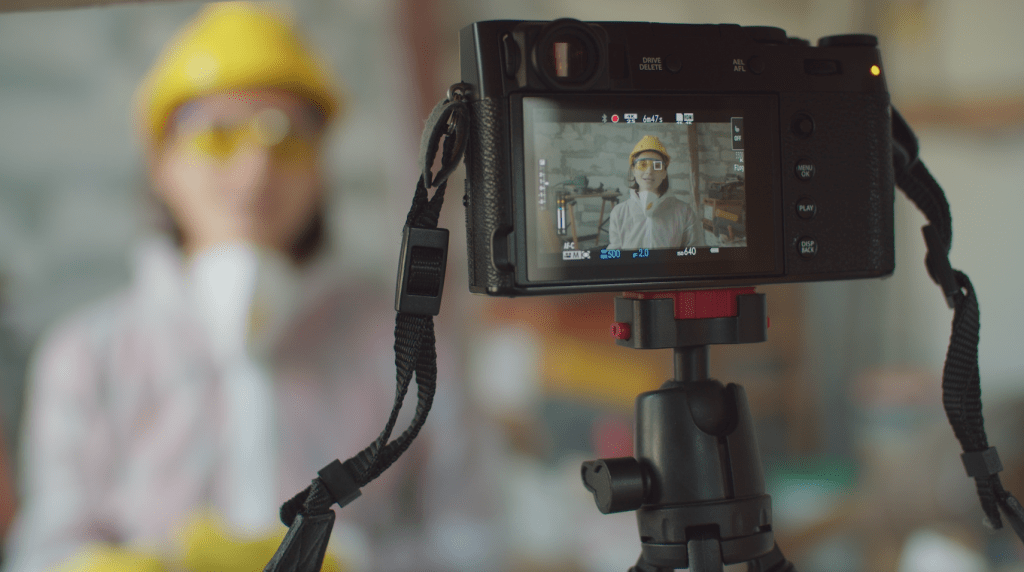Video Procedures
COMPANY KNOW-HOW ALWAYS WITH YOU
Donati Films, after having spent the last few years developing video content for companies, creates video procedures to offer companies an indispensable tool for transferring company know-how, both internally among their employees and externally, where you need to explain your product or service to agents or the end user.
Do you have difficulty transferring company know-how to your employees?
Do you need a lot of time to train new staff with the nightmare of turnover?
Looking for a quick way to train your agents?
Or do you want to explain how your product or service works effectively and quickly?
Or do you want to explain how your product or service works effectively and quickly?
There is only one solution: create video procedures of all those operations that constitute the company's know-how.
WATCH THE VIDEO AND FIND OUT HOW WE CAN HELP YOU

By calling us, we will analyze together the process of creating your video procedures.

Transfer company know-how
“Know-how” is an English term that refers to practical knowledge and skills acquired through experience and practical application. It can be translated into Italian as “know-how”, “practical competence”, “technical knowledge” or “professional ability”, depending on the context in which it is used.
If a company fails to transfer its know-how effectively, it may encounter several problems that can negatively impact its performance and competitiveness.
Here are some of the most common problems:
Critical loss of consciousness:
Without effective know-how transfer, the company risks losing critical knowledge and key skills when employees leave the organization or retire. This can reduce the company's ability to operate efficiently and innovatively.
Risk of errors and inefficiencies:
The lack of documented and transferred knowledge can lead to errors, inefficiencies and repetition of work within the company. Without standardized procedures and shared best practices, employees can make mistakes or take longer than necessary to complete tasks.
Difficulty adapting to changes:
A company that does not transfer its know-how may have difficulty adapting to changes in the market, technologies or operating environment. Without a solid foundation of knowledge and skills, the company may struggle to innovate and remain competitive in its industry.
Loss of competitive advantage:
Corporate know-how can be a significant competitive advantage for a company. Without being able to transfer this know-how to new employees or existing team members, the company risks losing its competitive advantage over competitors.
Employee morale:
Lack of learning and development opportunities can negatively impact employee morale and job satisfaction. Employees may feel frustrated or undervalued if they don't have access to the resources and training they need to grow professionally.
Compliance Risk:
In regulated industries, the lack of know-how transfer can increase the risk of regulatory non-compliance. Without a clear understanding of company procedures and policies, employees may make mistakes that lead to regulatory or legal violations.
In summary, failure to transmit corporate know-how can have significant consequences on several areas of the company, including its ability to innovate, compete in the market and maintain employee satisfaction. It is therefore essential for a company to invest in the practices and strategies necessary to ensure an effective transfer of know-how.
Donati Films, after having spent the last few years developing video content for companies, offers an indispensable tool for transferring company know-how, both internally among its employees and externally, where it is necessary to explain your product or service to agents or the end user.

The Video Procedures
LET'S ANSWER SOME QUESTIONS
What is meant by corporate procedure videos? + -
By video procedure we mean the film recording of all those operations that constitute the company's know-how and which allow the creation of its product or service.
What type of company can benefit from the creation of video procedures? + -
Practically every type of company, from micro to medium-sized businesses, benefits from the creation of video procedures, for a series of reasons which you will find further on this page.
What is the difference between how-to videos and tutorials? + -
While the tutorial shows a specific skill, the video procedure captures all the operations, even the simplest and most repetitive, which are carried out daily in the company and which contribute to the completion of the work as a whole.
What area can we videoprocedure? + -
Video procedures can be created in every company department, from production to trade, from logistics to administration.
Why create company video procedures?
The advantages in creating corporate procedure videos are many:
1. Clarity and understanding
Video procedures can be clearer and more understandable than written documentation, especially for complex tasks or detailed procedures. Users can see exactly how to perform a task rather than interpreting written instructions.
Example
An electronics manufacturing company might create a video walkthrough to show employees how to assemble a new smartphone model. The video could show every step, from installing the internal components to attaching the screen, offering a clear and understandable guide for assembling the device.
2. Accessibility
Video walkthroughs can be accessed from anywhere at any time, allowing employees to access training resources when they need them, without having to wait for a classroom course or training session.
Example
A legal consulting firm might record training sessions on new laws or legal procedures. These videos could be uploaded to an internal platform accessible to all employees, allowing them to view the information at any time and from anywhere, even when traveling or working remotely.
3. Reduction of errors
With visual instructions, employees are less likely to make mistakes when performing tasks or procedures, reducing the risk of costly errors or harm.
Example
An automotive manufacturing company could create a how-to video to instruct employees on the correct assembly of an engine. The video could highlight critical points, such as the correct assembly sequence of components and the use of specific tools, thus reducing the possibility of errors during the assembly process.
4. Save time
Video walkthroughs can reduce the time it takes to train employees on new tasks or procedures, as they can be quickly viewed and replayed as needed.
Example
A technology company might use video tutorials to train employees on new internal software platforms. These videos could be structured into short thematic modules, allowing employees to learn the necessary information quickly and efficiently, without having to participate in long classroom training sessions.
5. Uniformity
Video procedures ensure greater consistency in task execution, as all employees have access to the same source of instructions and can follow the same steps.
Example
A restaurant chain could create a series of how-to videos to instruct staff on how to prepare a specific dish according to company standards. By using the same videos across all locations, the company can ensure that all dishes are prepared consistently and meet quality and presentation standards.
6. Easier updates
It's easier to update and edit video procedures than written documentation, as you can record new videos or edit existing ones quickly and efficiently.
Example
A software company might record video tutorials to show employees how to use a new feature added to an internal application. In the event of updates or changes, the company can easily record a new video to illustrate the changes made and distribute it to all affected employees.
7. Employee engagement
Video walkthroughs can be more engaging and interesting to employees than reading documents, helping to maintain attention during training and improving overall engagement.
Example
A fashion company might create interactive video tutorials to educate employees on new design techniques or market trends. These videos could include hands-on exercises, opinion polls and guided discussions to actively engage employees in the learning process and encourage collaboration and creativity.
8. Repeatable training resources
Video procedures can be replayed multiple times without loss of quality or consistency, allowing employees to practice and review tasks until they feel confident performing them correctly.
Example
A healthcare company could use video procedures to train staff on how to properly perform medical instrument sterilization procedures. Videos could be made available on an internal online platform, allowing staff to review procedures as often as necessary, ensuring correct execution and greater safety for patients.

